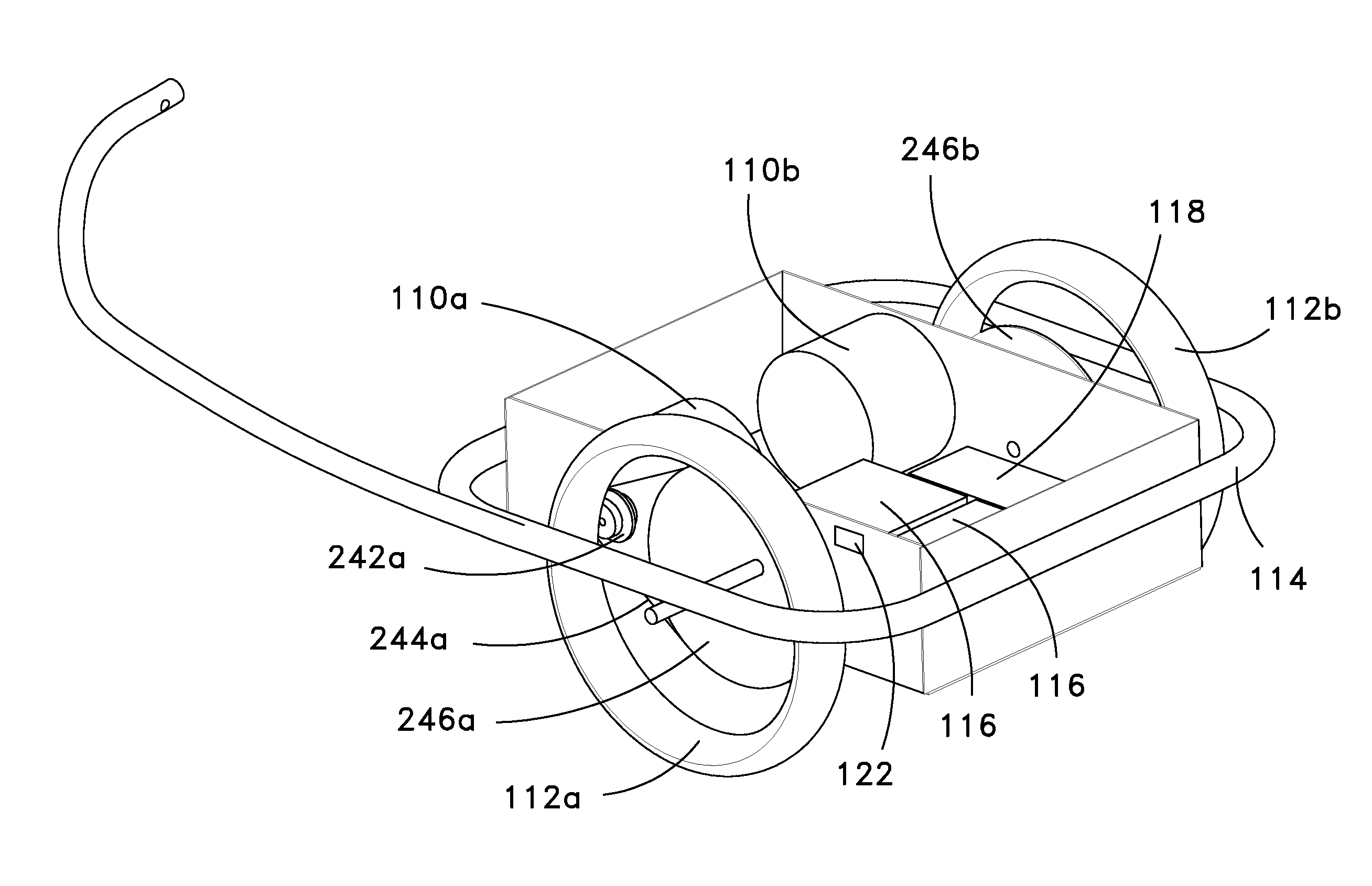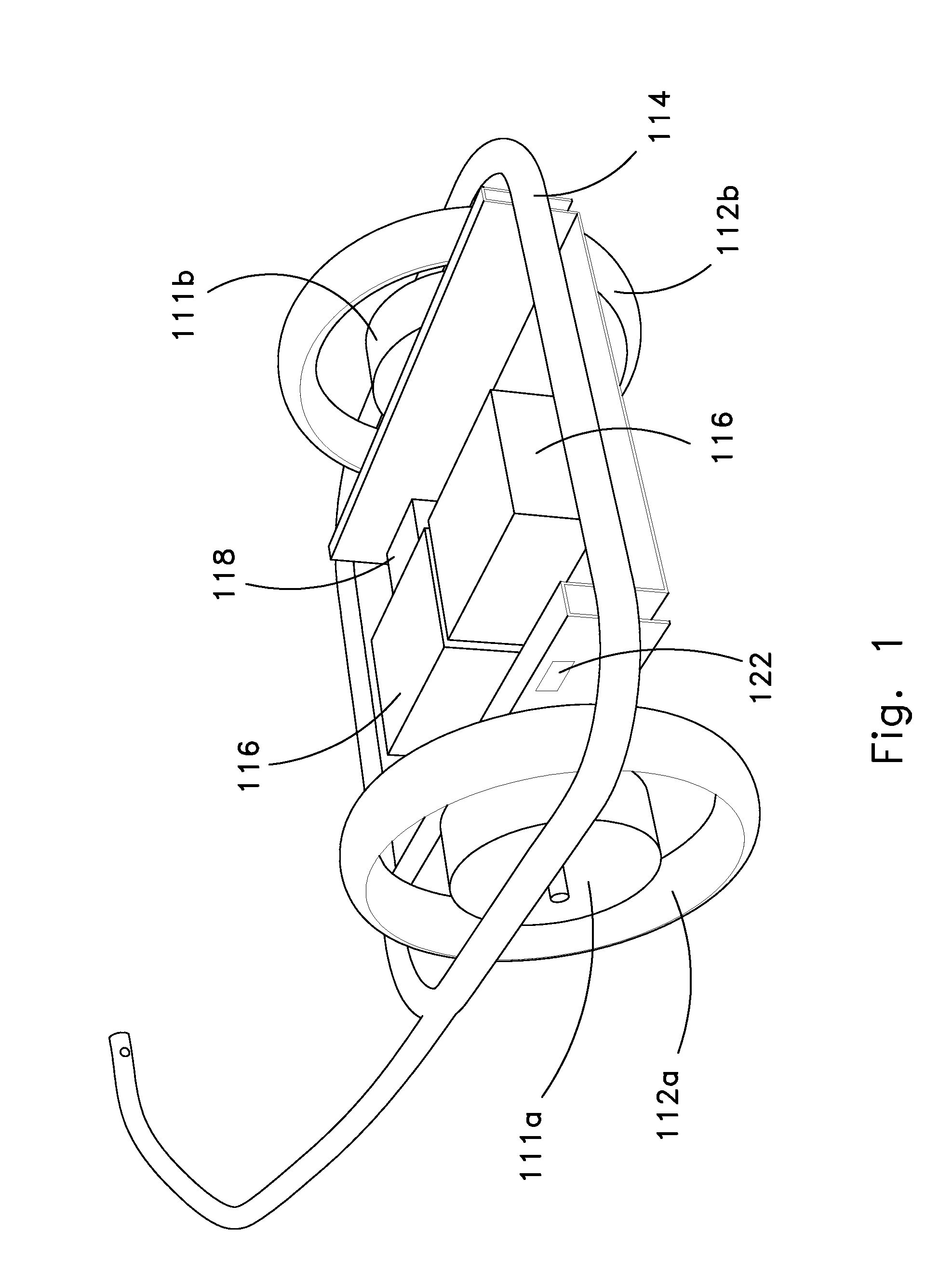Methods and apparatus for utilizing electrically powered vehicles
a technology of electrically powered vehicles and methods, applied in the direction of tractors, cycle equipment, cycles, etc., can solve the problems of limiting the speed of the system, exacerbate the wear of the brush, and provide a higher speed range with poor starting torque and acceleration
- Summary
- Abstract
- Description
- Claims
- Application Information
AI Technical Summary
Benefits of technology
Problems solved by technology
Method used
Image
Examples
example 1
Summary
[0105]The purpose of this Example 1 may be to improve upon electric bikes and trailers to provide perhaps more torque for acceleration or hill climbing while additionally enabling perhaps higher speed operation. These improvements may not add complex gear changing mechanisms and associated maintenance and decreased reliability.
[0106]This Example 1 may provide higher torque for starting or hill climbing and higher speed.
[0107]An improvement of the multi-wheeled electric bike, motorcycle, or trailer, may be accomplished with a motor for each wheel. A motor may be connected to one of the wheels and may be configured with low gearing for stronger startup torque. Another motor may be connected to a different wheel and may be configured with higher gearing for higher top speed. A controller may be used to shift power from one wheel to another based on torque, speed, throttle position, and / or other parameters which may indicate a trade between need for acceleration or higher speed.
[...
example 2
Summary
[0135]The purpose of this Example 2 may be to provide a throttle: 1) for an electric cycle or cycle with attached power trailer which a rider can actuate to command power from the motor; 2) that can be installed on a wide variety cycles quickly and simply (wide variety includes mountain bike style, cruiser style, recumbent style, and racing style wrap handlebars); 3) that can be moved or transferred from cycle to cycle quickly and simply; 4) that is mechanically and ergonomically compatible with various handbrakes, gear shifters, hand grips, and handle bar extensions or bar ends; and 5) a throttle that it is simple to use, adjustable for many size hands and fingers, ergonomically comfortable, and reliable.
[0136]This Example 2 may relate to a throttle that installs with no tools or minimal tools. One embodiment simply wraps around the grip and is held in place with Velcro or a clip. Another embodiment simply inserts into the hollow end of the handle bar. Both embodiments can b...
embodiment (
b)
[0163]Shown in FIG. 14, FIG. 15, and FIG. 16, bar insert 340 serves as a foundation for the throttle parts and coupling to the handle bar. Bar insert 340 has a slot and opening for the lever 342 which is held in place with pivot pin 346. Lever 342 is free to rotate around pivot pin 346 between the handle bar 360 and the maximum rotation constrained by interference between insert bar 340 and lever 342. Torsion spring 348 provides return force to lever 342 such that when the rider releases pressure from the lever 342, it springs outward to diminish the control signal. When released by the rider, the lever 342 springs all the way out to create an “off” signal. Buttons A and B 326 are mounted to the bar insert 340 to hold them in securely in place and alignment to lever 342. Buttons 326 are on top and bottom of lever 342. Lever 342 has raised cams that activate or depress the buttons 326 in sequence as the lever 342 is rotated around pivot pin 346 towards the handle bar 360. The motio...
PUM
| Property | Measurement | Unit |
|---|---|---|
| speed | aaaaa | aaaaa |
| speed | aaaaa | aaaaa |
| voltage | aaaaa | aaaaa |
Abstract
Description
Claims
Application Information
 Login to View More
Login to View More - R&D
- Intellectual Property
- Life Sciences
- Materials
- Tech Scout
- Unparalleled Data Quality
- Higher Quality Content
- 60% Fewer Hallucinations
Browse by: Latest US Patents, China's latest patents, Technical Efficacy Thesaurus, Application Domain, Technology Topic, Popular Technical Reports.
© 2025 PatSnap. All rights reserved.Legal|Privacy policy|Modern Slavery Act Transparency Statement|Sitemap|About US| Contact US: help@patsnap.com



